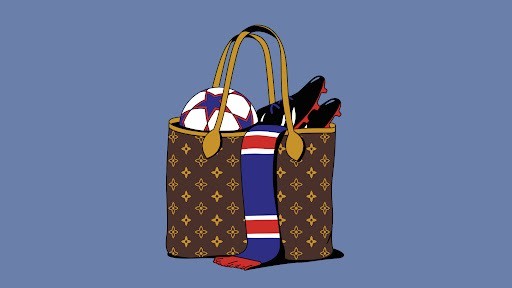Stay informed with free updates
Simply sign up to the Life & Arts myFT Digest — delivered directly to your inbox.
Soon after moving to Paris in 2002, I went to watch the city’s only top-division football club, Paris Saint-Germain. I emerged from a metro station near the stadium to see a small white skinhead chucking a plastic cup of beer at a black man, then chasing after him. Confusingly, both men were PSG fans.
After a dispiriting game, we emerged into the bourgeois streets of the 16th arrondissement, where nobody cared. Back then, most Parisians only noticed PSG if forced to, for instance on Bastille Day of 2002 when the club’s “ultra” supporter Maxime Brunerie tried to assassinate President Jacques Chirac with a .22 rifle. Snooty Paris just wasn’t a football city.
It is now. PSG face Inter Milan in Saturday’s Champions League final as favourites to become European champions for the first time. The family of Bernard Arnault, boss of the LVMH luxury group and Europe’s richest man, has bought a previously almost unnoticed local club, Paris FC, which has been freshly promoted to the top division. Paris has also become global football’s biggest talent pool. What happened?
Paris finally acquired a serious football club in 1970, when little Paris FC and Stade saint-germanois merged into PSG. (Paris FC soon walked out again.) At the time, the city’s growing suburbs, the banlieues, were filling with kids who had few entertainments besides football. In new towns short on markers of belonging, millions grew up supporting PSG as a way to feel Parisian. The popular claim that it’s a fake club with money but no fans is nonsense.
The French state funded accredited coaches and artificial pitches in the banlieues. Soon, Greater Paris was producing more top footballers than certain continents. French teams packed with Parisians have reached four of the seven World Cup finals since 1998, winning two, and losing two only on penalty shoot-outs.
The previous time PSG reached the Champions League final, against Bayern Munich in 2020, they lost to a goal by Bayern’s Parisian exile Kingsley Coman, but Parisian talent goes a long way down. My sons’ beloved former kids’ coach Mustapha Sangaré is now centre-forward of Bulgaria’s Levski Sofia.
PSG’s rise began in 2011, when the French president Nicolas Sarkozy, a fan, encouraged a wing of Qatar’s state to buy the club for a piffling €70mn or so. Sarkozy rooted out the hooligans, and Qatar bought superstar players. Two years ago, PSG’s front three were Kylian Mbappé, Neymar and Leo Messi. Yet PSG fans (I have two in my apartment) prefer today’s younger, harder-working, less-spoilt side.
The pacified Parc des Princes stadium now has a brilliant atmosphere, with call-and-response cries between the two ends of “Allez Paris!” answered by “Paris est magique!” After PSG overcame Arsenal in this month’s Champions League semi-final, thousands (including my sons) celebrated on the Champs-Élysées.
The wider Paris region has grown to 12.5 million inhabitants, overtaking London thanks largely to its greater capacity to build. There’s excess local demand for football, and the Arnaults hope to supply it. In the perfect metaphor for 21st-century Paris, the luxury family has bought a traditionally proletarian local club and transplanted it to the posh 16th arrondissement, where, next season, Paris FC will play literally across the street from PSG.
Also entering the field is the telecoms billionaire Xavier Niel, Arnault’s son-in-law, who has bought into fourth-division US Créteil-Lusitanos in his native banlieue. Expect some tasty future Parisian and all-Arnault derbies.
Paris’s footballing ascent was driven by the metropole’s growth and plutocratisation. Some version of that story applies to other capitals too. No London club reached the final of the European Cup (later the Champions League) in the competition’s first half-century from 1955. Since 2006, Arsenal, Tottenham and Chelsea all have — Chelsea twice.
Arsenal and Spurs have built big new stadiums replete with VIP suites to lure rich Londoners. Even Real Madrid, the one capital club that’s a traditional football giant, has benefited from its city’s transformation into Spain’s main business hub. Boosted by VIP seats, the European clubs with the highest match-day revenues are now Madrid, PSG and Arsenal.
Football used to be the one terrain of European life in which provincial cities could humble the capitals. Today, even that consolation is at risk.
Email Simon at [email protected]
Find out about our latest stories first — follow FT Weekend Magazine on X and FT Weekend on Instagram
